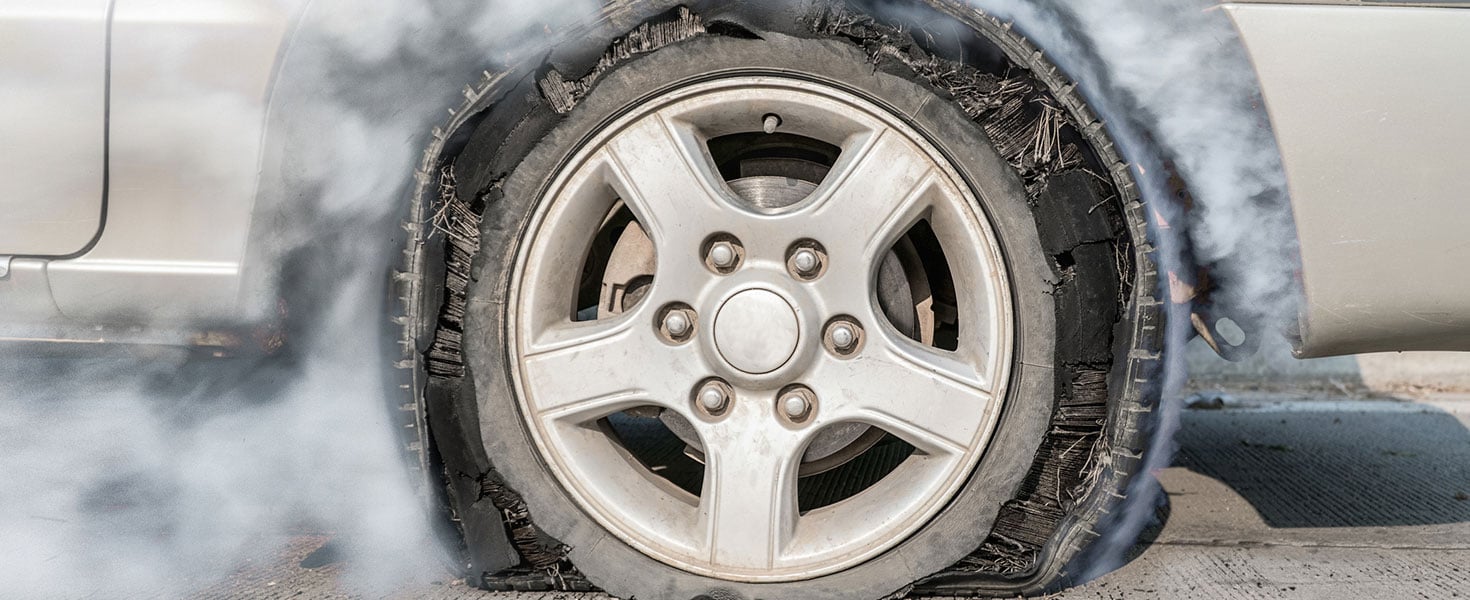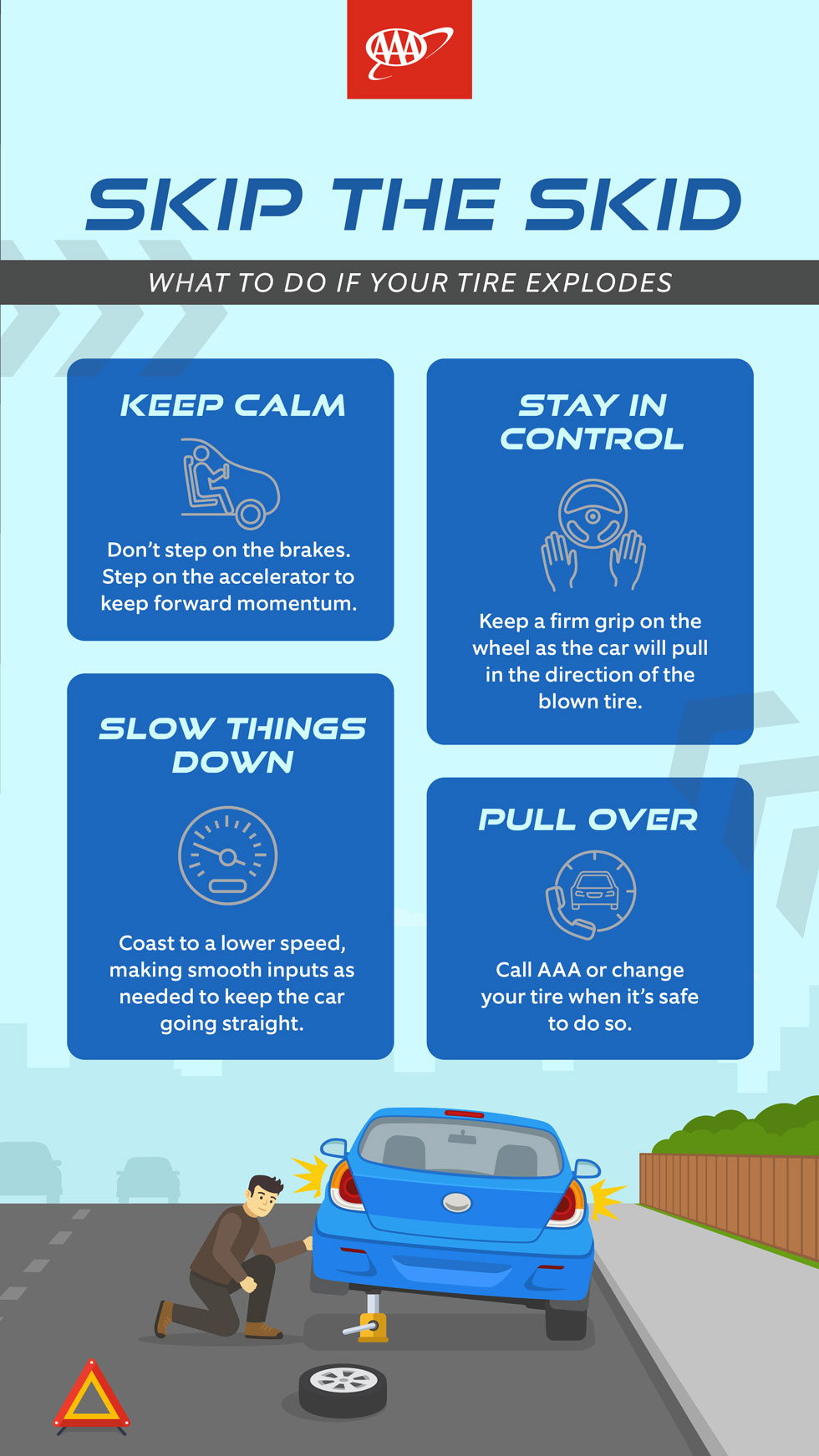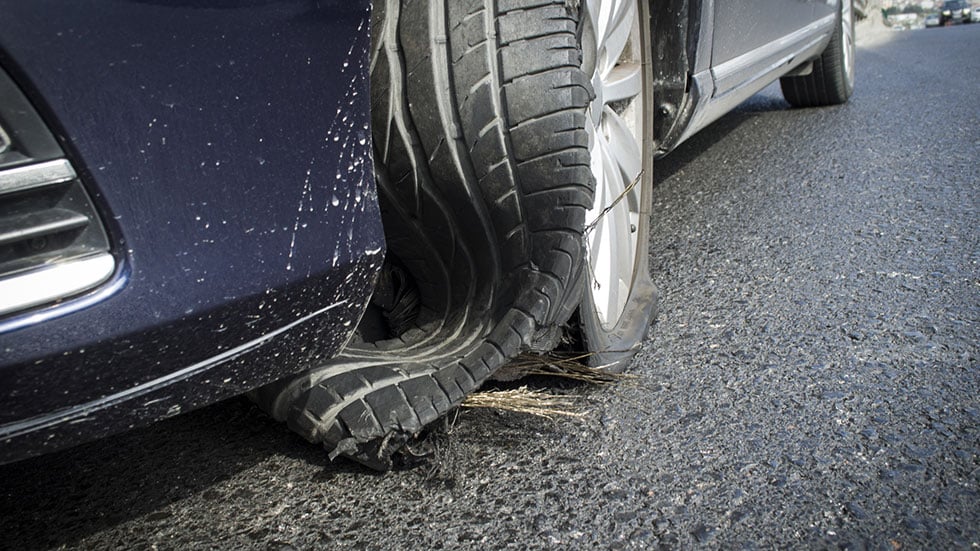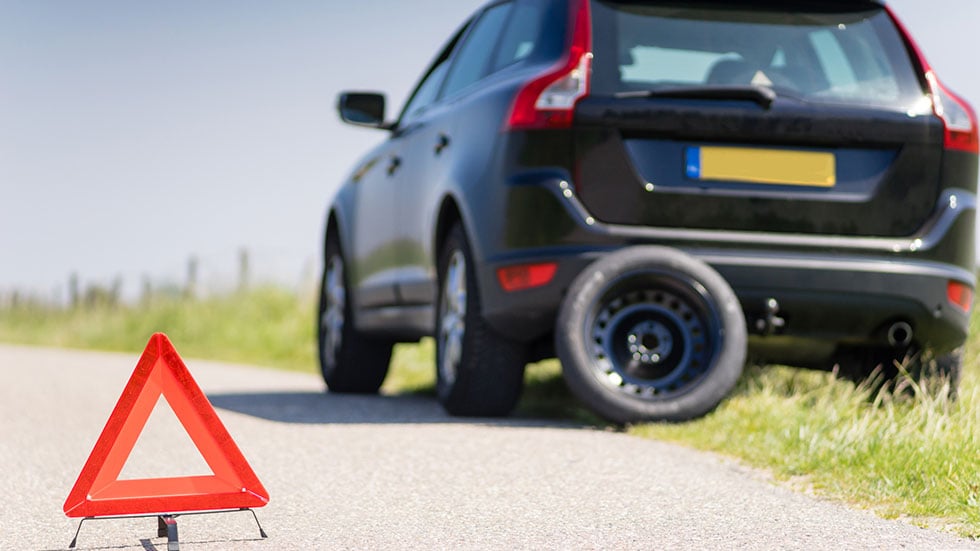How To Handle A Tire Explosion While Driving
3 steps to safely reach the side of the road—plus the importance of tire maintenance in avoiding blowouts


In terms of roadside emergencies and vehicle mishaps, few can be more jarring and potentially catastrophic than a tire explosion or “blowout,” as it’s commonly known. The unmistakable boom, hiss, and loss of control that suddenly happens when a tire pops has been known to cause some drivers to panic and crash their vehicle.
Let's take a look at some of the reasons why tires can explode and outline some basic steps to follow when you're driving and you have a blowout. These tips can help you maintain control of your vehicle while safely moving out of traffic and onto the side of the road.

WHAT CAUSES A TIRE TO EXPLODE?
A tire can blow up for many reasons, but usually it’s due to a weakened or compromised sidewall. The sidewall of your tire isn’t as thick as the treads that contact the road, so many blowouts are the result of a sidewall leak that allows all of the air inside the tire to escape suddenly. Sidewalls can become weak or damaged over time, due to excessive heat, weight, or inadequate inflation.
Roadside obstacles like curbing or debris can certainly cause a blowout, but improper tire maintenance can also be the culprit. Improperly inflated tires, overloading a vehicle with too much weight, and driving on old tires with little to no tread are all some of the main reasons drivers have experienced blowouts of their tires.
It may seem illogical that a tire with too little air will explode, but it’s true. As underinflated tires roll down the road, their sidewall flexes more than it would if the tire were inflated properly. As the car moves and increases speed, this additional, rapid flexing generates a buildup of heat in the sidewall. Eventually, with enough heat, the weak points of the sidewall can give way, causing the tire to explode.

WHAT SHOULD YOU DO IN THE EVENT OF A TIRE EXPLOSION?
The first and most important thing you can do when a tire explodes is to remain calm. At the moment your tire explodes, you may feel a total loss of control of your vehicle, so it’s important to maintain as much forward momentum as possible and to not make any sudden changes in the control systems of your car. You should NEVER slam on your brakes or jerk your steering wheel to the side of the road.

STEP 1: MOMENT OF EXPLOSION—MAINTAIN MOMENTUM
Once you realize you’ve had a blowout, your instinct may be to step on the brakes, but you should actually step on the accelerator for an instant to maintain forward momentum. This input of gas should help offset the sudden pulling caused by the blown tire.
STEP 2: VEHICLE SLOWDOWN—MAINTAIN CONTROL
The important thing is to maintain control of your vehicle to the best of your ability. When a tire blows out, there is a greater risk of fishtailing or swerving into other lanes of traffic. Remember, your vehicle will pull in the direction of the blown tire, so steady but firm steering keeps your vehicle in its lane as it decelerates.
When you feel you have control of your car, turn on your hazard lights to alert surrounding drivers.
STEP 3: REACH A SAFE PLACE—PULL OVER
After the vehicle has slowed and you feel it’s safe, begin guiding your car to the side of the road and out of traffic. Maintaining control of the vehicle is crucial during this step, especially since your steering ability will be compromised by the blowout.
Remain calm and focus on controlling your vehicle as it comes to a stop with smooth, calculated handling of your speed, steering, and brakes.
